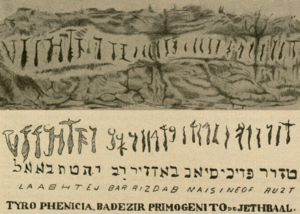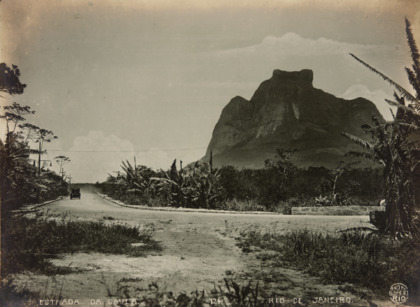Archaeological interest of Pedra da Gávea facts for kids
Pedra da Gávea is a giant mountain located in the Tijuca Forest in Rio de Janeiro, Brazil. It's quite famous because one side of the rock looks like a human face. People also believe there are ancient writings carved into another part of the mountain.
Some individuals, like Bernardo de Azevedo da Silva Ramos, have suggested that these writings are from the Phoenicians. This idea hints that people from the Old World (like Europe and Asia) might have visited America long before Christopher Columbus. Other interesting theories include that the rock was once home to a Viking colony or that it's connected to suspected UFO activity.
However, most geologists and scientists agree that the "writings" are actually just natural patterns caused by erosion. They also say the "face" is a result of pareidolia. This is when your brain sees familiar shapes, like faces, in random patterns. There is no strong evidence to support the idea that Pedra da Gávea was discovered by Phoenicians or any other ancient civilization. Most archaeologists and experts in Brazil agree that the mountain is not an ancient archaeological site. They consider these other ideas to be fringe theories, which are not widely accepted by scientists.
Contents
What Are the Purported Inscriptions on Pedra da Gávea?
For many years, people have thought that there are special carvings on the rock face of Pedra da Gávea. It's said that Christian missionaries were the first to notice these "markings." They reported their discovery to John VI, who was the King of Portugal at the time. His son, Pedro I of Brazil, later looked into these theories. According to Paul Herrmann's book Conquests by Man, many people first thought the inscription was made by "some unknown prehistoric American people." But then, some began to guess that the characters were from the Phoenicians.
In 1839, Januário da Cunha Barbosa and Araújo Porto-Alegre, working for the Brazilian Historic and Geographic Institute (IHGB), did the first official study of the markings. They later wrote an article called "The Report on the Inscription of Gávea." In their report, Barbosa and Porto-Alegre suggested two main ideas for the markings. They thought either "the inscription was made by ancient people who landed on the Brazilian coast, or it was the result of mere chance." If ancient people made them, they hoped that one day a "Brazilian Champollion" would be able to figure out what the inscription meant. (Champollion was the person who famously deciphered Egyptian hieroglyphs.)
Who Claimed to Decipher the Pedra da Gávea Inscription?
In the 1930s, a Brazilian archaeologist named Bernardo de Azevedo da Silva Ramos studied the mountain. He hoped it would prove his belief that "a pre-Columbian civilization existed in America at the same time as the Phoenicians and Greeks were powerful in the Mediterranean Sea." Ramos went to Pedra da Gávea, wrote down the marks that the IHGB had described, and then, with help from a rabbi in Manaus, he claimed to have "succeeded in deciphering the inscriptions."
According to Ramos, if you read the inscription from right to left (which is how Phoenician is written), it says "TZUR FOENISIAN BADZIR RAB JETHBAAL." This roughly translates to "Tyre, Phoenicia, Badezir, Firstborn of Jethbaal." He believed this referred to a Phoenician ruler named Baal-Eser II, who ruled Tyre around 850 BC. Ramos later published a two-volume book. It was called Tradições da America Pré-Histórica, Especialmente do Brasil, and it tried to show all the evidence of supposed Phoenician inscriptions in Brazil.
What Are Other Theories About the Markings?
Many other people and groups have tried to explain and confirm the inscription. For example, a Latter Day Saint Elder named Irineu Petri did a study. He wanted to find "the possible relation between the inscription … and the Book of Mormon."
An Argentinian archaeologist named Jacques de Mahieu argued that the inscription wasn't Phoenician at all. He thought it was Nordic runes, which are ancient Germanic letters. He claimed it read: "Next to this rock, numerous oak planks for ship are deposited on the beaches of sand." He also believed that Vikings would have respected the site. This is because the mountain might have looked like their god Odin to them. The International Fortean Organization used the discovery of what were thought to be Phoenician amphorae (ancient storage jars) in Guanabara Bay in 1982 as evidence. They thought this showed Phoenicians were at least in the area.
Besides the supposed inscription, some people also claim that the "face" on the rock was carved around the same time. They think it was made to look like Badezir. Also, an issue of The INFO Journal wondered if the mountain contains a Phoenician tomb. However, there is no scientific evidence to suggest that this is true.
See Also



